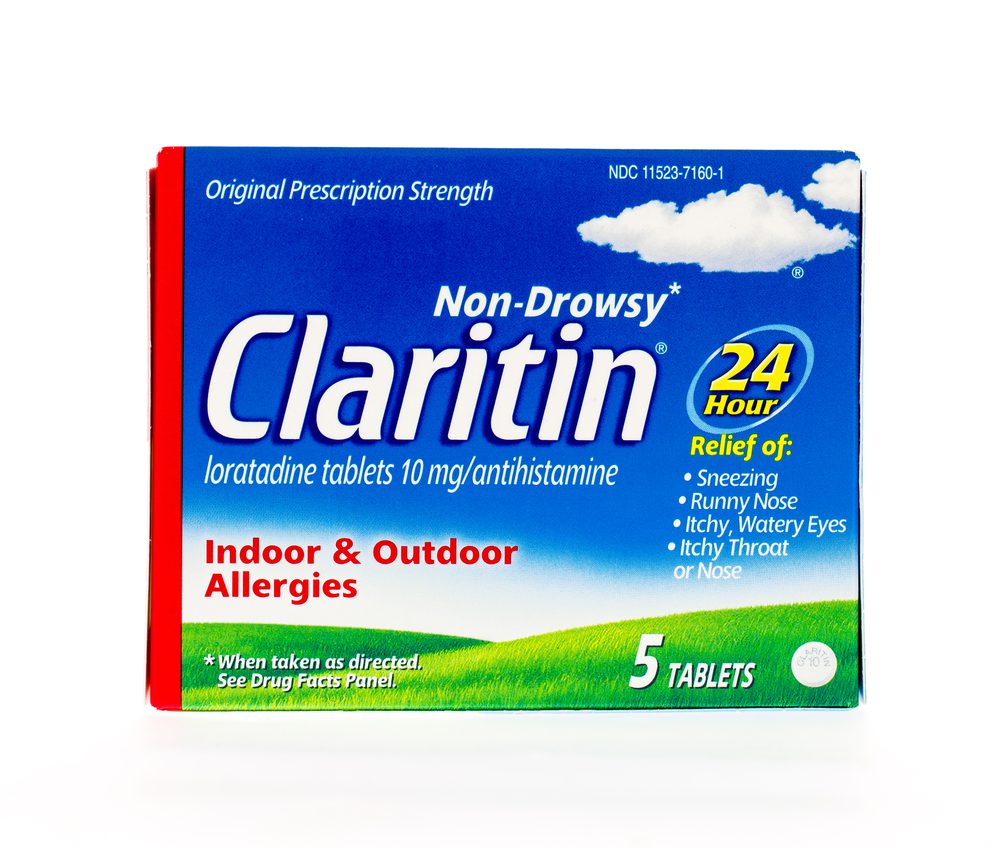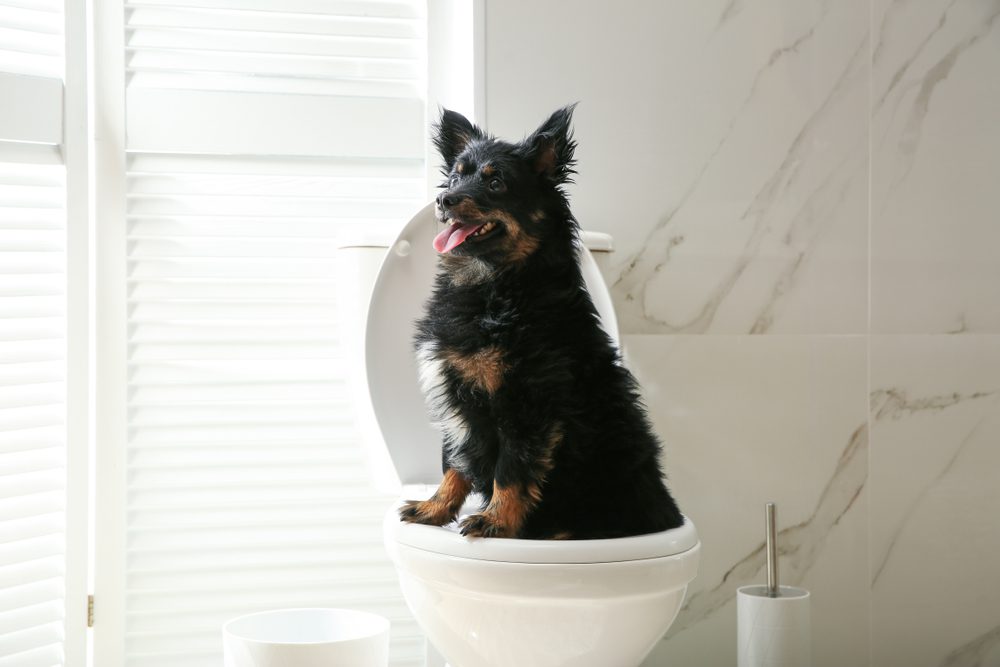Claritin for Dogs: Dosage, Benefits, Side Effects, and More!

Table of Contents
Dog allergies are common for dogs and can be hard to manage. In this article, we will talk about Claritin for dogs.
Based on statistics, Claritin for dogs (Loratadine), together with Cetirizine and Fexofenadine, is the most commonly used second-generation antihistamine for dogs in veterinary medicine. Let’s see why this off-label medication is so widely used.
Can I Give My Dog Claritin?
Yes, you can give your dog Claritin because the medication is generally safe and beneficial. However, we recommend giving your veterinarian a quick call first.
This is because the Claritin formula you have in the medicine cabinet may be too strong for your dog or contain potentially harmful ingredients. Plus, a veterinarian should review your dog’s medical history before approving Claritin’s use.
When to Use Claritin for Dogs

Claritin (active ingredient Loratadine) is an antihistamine from the piperidine class. Loratadine works by blocking the effects of histamine – the main chemical responsible for inflammation and allergies. Namely, when the immune system identifies a particle as an allergen, it triggers a chain of reactions mediated by histamine.
The histamine travels through the body in search of specific histamine receptors, and once bound with them, it causes itchiness, swelling, and other allergy symptoms. Loratadine, same as all antihistamines, prevents the histamine from binding with its receptors, thus inhibiting its major pro-inflammatory role and preventing the allergy reaction.
Benefits and Uses of Claritin for Dogs
As an antihistamine medication, Claritin manages inflammation and allergy symptoms quickly and efficiently. Therefore, it can be used in several situations:
- Claritin for Dog Allergies. Claritin provides relief for dogs suffering from different allergies. Dogs are prone to canine atopic dermatitis, environmental (dander, pollen, mites, dust), and food allergies (chicken, beef, eggs, dairy). Regardless of the allergen, Claritin can manage allergy symptoms.
- Claritin for Reactions to Vaccines in Dogs. It is not uncommon for some extra-sensitive dogs to experience adverse and allergic reactions to regular vaccines. Claritin can inhibit such occurrences and be given preventively before the reaction develops.
- Claritin for Dog Bug Bites/Stings. Bugs (bees, wasps, spiders) and external parasites (ticks, fleas, mites) cause inflammation at the bite/sting site. Giving Claritin is an excellent first-aid choice that will prevent complications.
- Claritin for Mast Cell Tumors in Dogs. Dogs with mast cell tumors are prone to chronic inflammation issues because they have excess histamine levels in their blood. Antihistamines are often prescribed to combat the inflammation symptoms (not cancer itself).
Is Claritin good for dog allergies?
Yes, Claritin is an excellent choice for dogs with allergies – it is efficient, safe, and can be combined with other supplements (like omega fatty acids) and approaches (HEPA filters for minimized allergen exposure).
Can dogs have Claritin for itching?
Yes, dogs itching can have Claritin. By blocking the histamine effects, Claritin helps prevent and manage all allergy symptoms, including itchiness.
Potential Side Effects and Risks of Claritin for Dogs

Unlike most antihistamines, Loratadine does not cross the blood-brain barrier meaning it is not associated with drowsiness. However, it can still trigger some side effects, including:
- Vomiting and/or diarrhea
- Stomach upsets and dry mouth
- Urinary retention
- Decreased tear production
Loratadine medications and formulations should not be used in:
- Dogs allergic or sensitive to Loratadine
- Dogs on meds with established drug interactions
- Dogs with dry keratoconjunctivitis, kidney, and liver disease
- Young pups and pregnant and nursing females
Claritin Dosage for Dogs
The recommended Claritin dose for dogs is between 0.1 and 0.55 mg per pound of body weight once or twice per day. Since it is not advisable to crush the tablet, the loratadine amount is often calculated in the total dose. Namely:
- Small dogs (less than14 lbs) can be given one 5 mg tablet once per day
- Medium dogs (15-39 lbs) can be given one 10 mg tablet once per day
- Large dogs (over 40 lbs) can be given one 10 mg tablet twice per day.
If you forget to give your dog Claritin, either provide the medication as soon as you remember or skip the missed dose and then continue with the regular administration schedule.
In both cases, it is critical not to double the missed dose. This is because high Loratadine doses are linked with behavioral changes (depression or hyperactivity), and in severe cases, overdoses may result in a rapid heart rate and stroke.
Claritin for Dogs Usage Guidelines
Claritin is available in various forms, including regular tablets, disintegrating tablets, chewable tablets, and syrups. The disintegrating tablets must not be used in dogs because they often contain xylitol – an artificial sweetener that is extremely toxic to dogs, and the syrup is toxic to both dogs and cats because it is preserved in propylene glycol and enriched with xylitol.
Additionally, dogs must never be given Claritin-D, a formulation with pseudoephedrine as a second active ingredient. While a helpful decongestant in people, pseudoephedrine is toxic to pets (dogs and cats).
On the other hand, the Claritin Junior formulation is safe for dogs and can be convenient for use in toy dogs as it contains low Loratadine amounts (2.5 mg per tablet).
We should also note that Loratadine interacts with certain medications and should not be used at the same time with:
- Antibiotics like erythromycin
- Antifungals like ketoconazole
- Antacids like cimetidine
However, not all interactions are bad. For example, Loratadine acts synergistically with omega-3 fatty acids. Therefore, when giving Claritin to your dog, veterinarians recommend using a supplement like fish oil (preferably made from wild-caught and cold-water fish like salmon).
If your dog does not handle Claritin well, you can try another member of the antihistamines family, like Benadryl (Diphenhydramine), Tavist (Clemastine), Zyrtec (Cetirizine), or Allegra (Fexofenadine). They are all available over the counter and can help manage your dog’s allergy symptoms.
Alternatively, if you prefer a more natural approach, we suggest using CBD oil for dogs. Cannabidiol (CBD) can help dogs with different types of allergies while simultaneously supporting overall health and well-being.
Honest Paws offers a wide range of CBD oils and treats made with organic, full-spectrum hemp CBD. Plus, they feature additional health-boosting ingredients and dog-friendly flavors for extra convenience.
Our Final Thoughts on Claritin for Dogs

If your dog is suffering from allergy symptoms and you are suffering when your beloved pet is in pain, Claritin is the solution you are looking for. This popular antihistamine is efficient, safe, and can be used in conjunction with other treatments.
However, do not forget to discuss your dog’s anti-allergy strategy with the vet. This article is purely informative and should not be used as an excuse to skip the veterinary consult.
Dr. Elizabeth Racine says, “When using antihistamines like Claritin, it’s important to consult your veterinarian to determine the appropriate medication and dose prior to starting the antihistamine for your dog. Always look for the original formula, and never purchase an antihistamine that includes other medications like decongestants or painkillers, as these can be toxic for your dog.”















